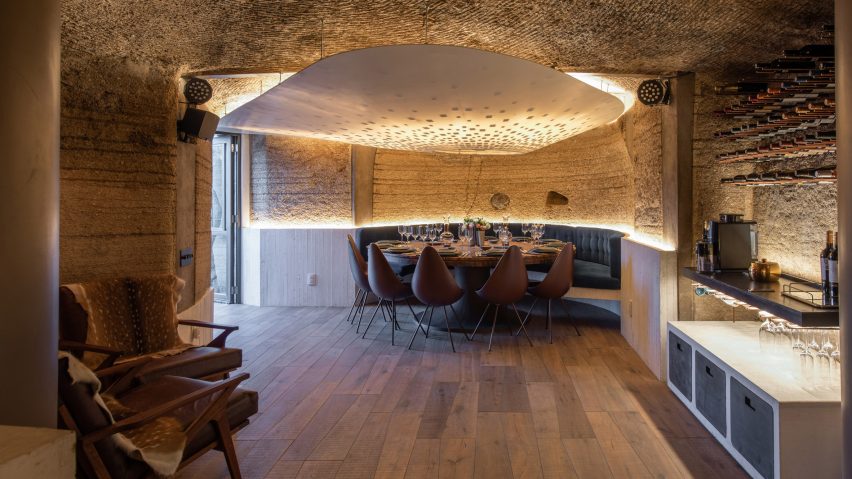
Amezcua transforms cave into subterranean addition for Mexico City dwelling
Rugged walls, domed ceilings and reflective surfaces feature in this underground lair that was designed by Mexican studio Amezcua for an existing 1960s residence on a hill.

The project, called Photocatalytic Cave, was built under a house just west of Mexico City, in a hilly area where it is common to find caves dug for the extraction of sand. The home belongs to a co-owner of the real estate company MM, who desired an underground space where he could host parties or spend time alone.
Local studio Amezcua set out to create a "habitable, enduring and mutable" space that worked in concert with the client's above-ground residence.
The house was designed a half-century ago by postmodern architect Manuel Rocha Díaz in collaboration with his client, sculptor Ernesto Paulsen. The residence features a large, convex ceiling that is lined with thousands of pieces of oak.
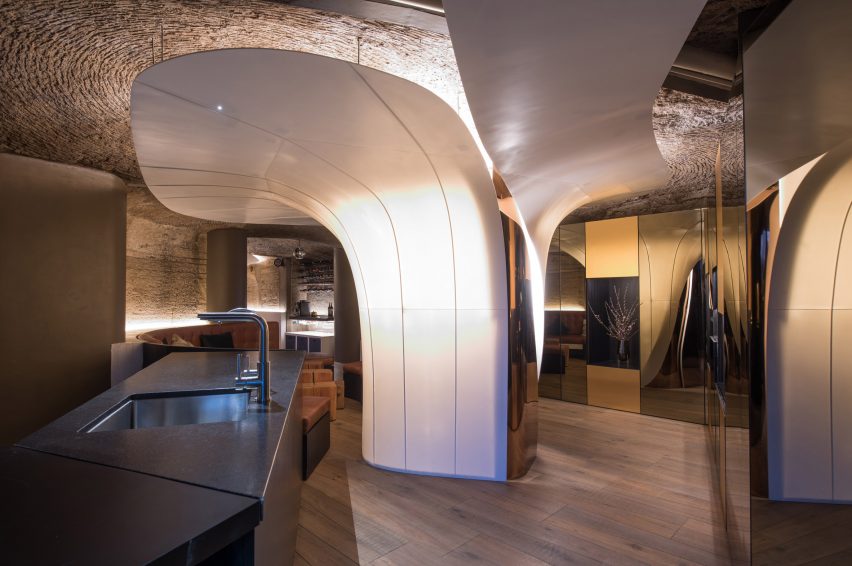
For the design of the subterranean space, Amezcua drew upon the home's vocabulary, along with the upscale apartments built by MM in Mexico City. The architects also considered the use of caves by early humans.
"It is there, in the cave, where we find the first refuge of man in history, characterised by being a place with very little light, limited ventilation and high humidity," the team said in a project description. "At the same time, it was a safe place – a naturally fortified refuge where a man can isolate himself from the world, be protected from the weather and socialise in tranquility."
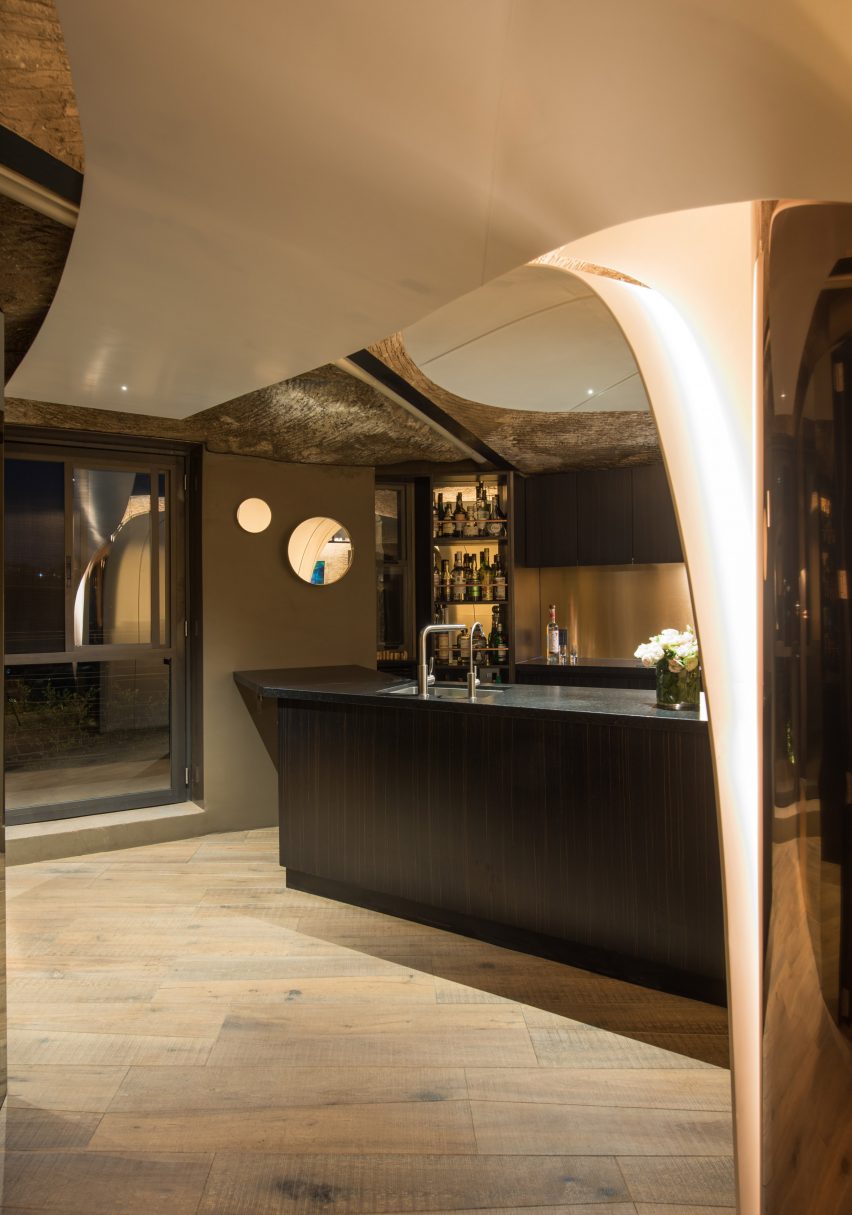
Encompassing 70 square metres, the addition comprises five chambers, each with a distinct function. One chamber contains a kitchen and bar, while an adjacent room houses the living room and a media area.
A third chamber encompasses a dining area and access to a balcony, and a fourth contains wine storage and space for smoking and sipping coffee. The final chamber houses a bathroom and is concealed behind a mirrored door in the kitchen.
The project involved several key steps. During the first step, which concerned the structural system, the team installed metal lintels – similar to those used in coal mines – and supporting columns. The second step involved carving the roofs and forming the domed ceilings, which transfer the structural load to perimeter walls.
The third step addressed the potential for bacteria and fungi to form due to the presence of humidity and limestone. In response, the team used passive strategies, such as anti-corrosive materials and natural air circulation, while also incorporating "active" equipment such as air injectors, dehumidifiers and heaters.
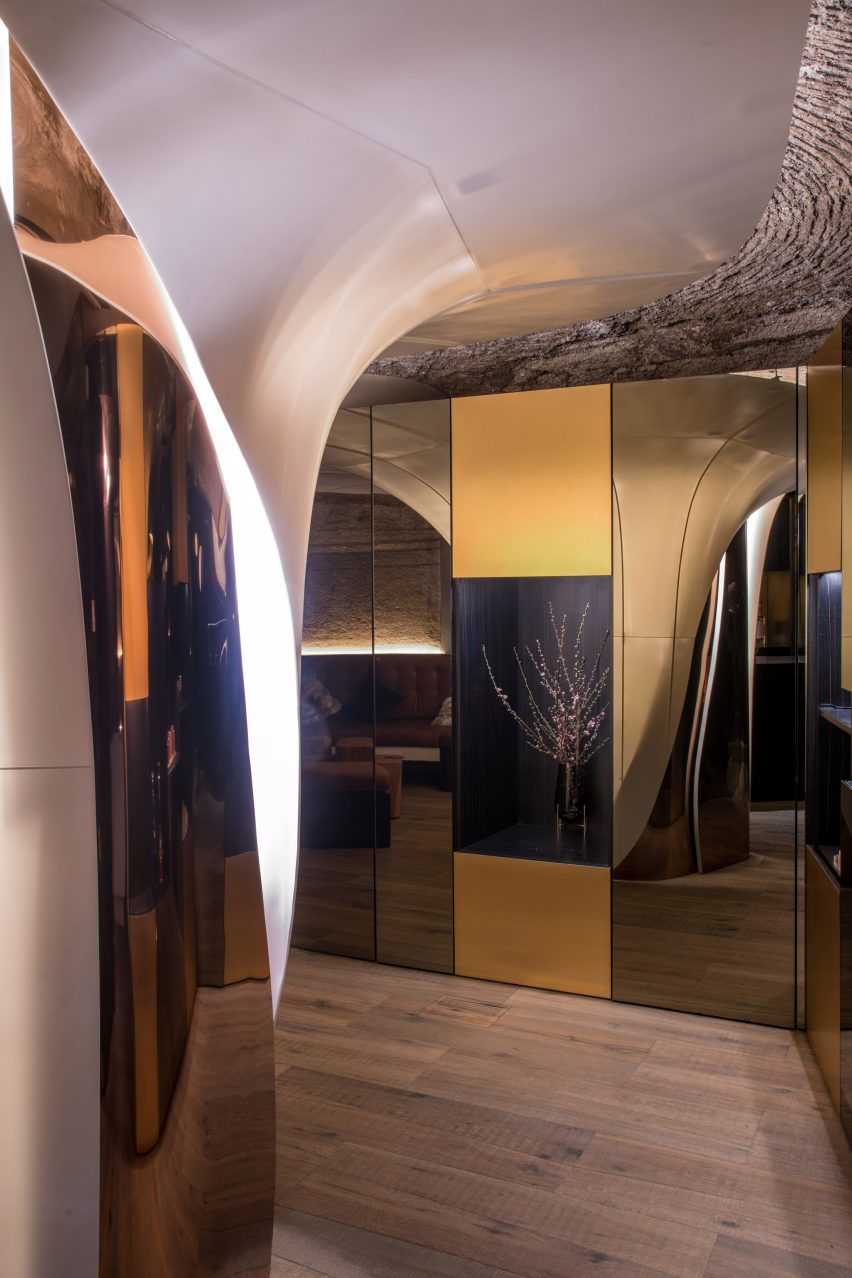
The space has a fluid layout and a mix of raw and sleek finishes. Carved limestone walls are paired with wooden flooring, glossy surfaces and dark and light cabinetry. Rooms are fitted with contemporary furnishings that can accommodate spaces with irregular dimensions.
In the living area, the team placed a curved, leather sofa that follows the shape of the wall, along with wooden blocks that serve as support tables or movable benches. In the kitchen, the team installed cabinetry made of wood, copper and mirrors.
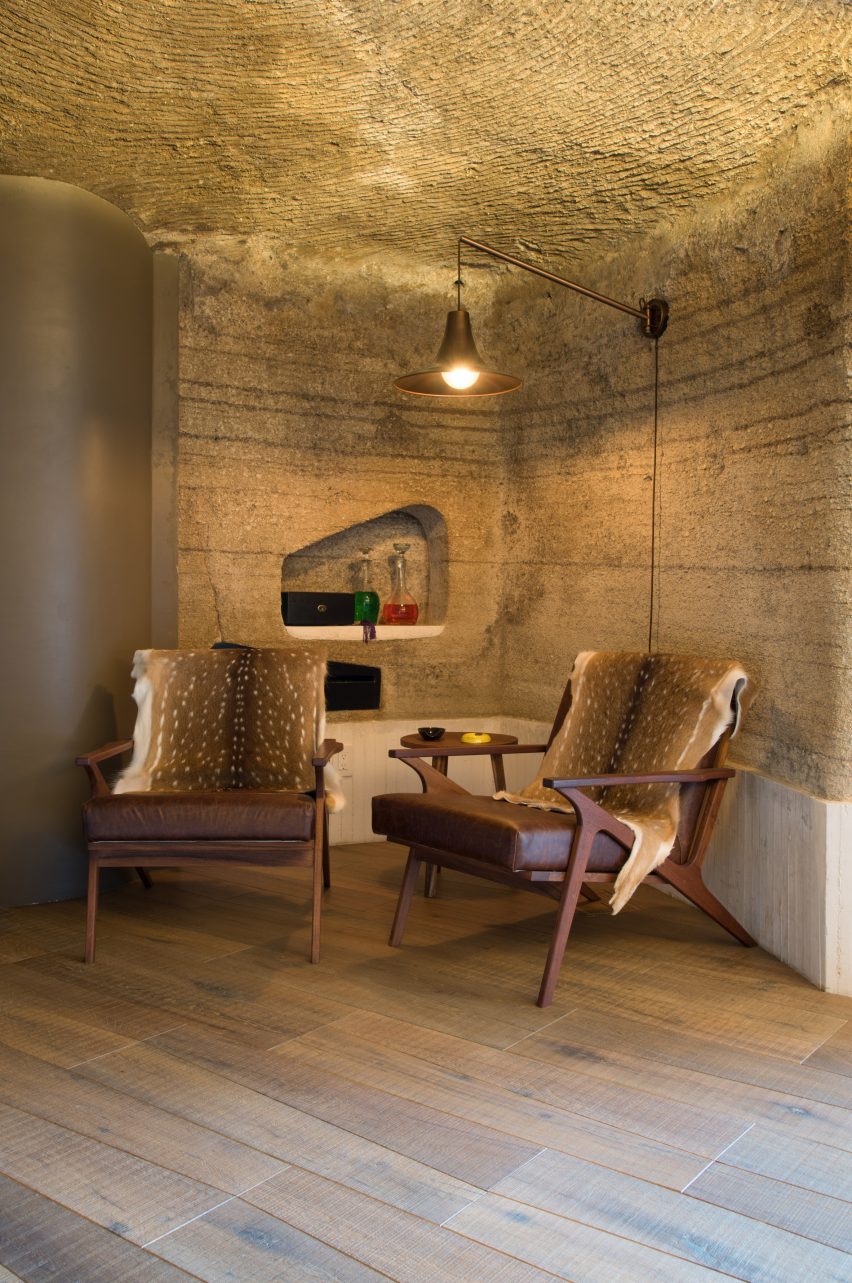
At the heart of the addition is the living room and kitchen, which are separated by a partition shaped like a calla lily flower. The sculptural partition is wrapped in white panels of Krion – a composite material with photocatalytic properties that can help diffuse light and purify the air, according to the firm.
The same material was used to create a glowing installation that hangs over the dining room table. In addition to illuminating the space, the piece "emulates the effect of an x-ray, exhibiting a series of blocks placed by the owner – each carrying a written intention". The installation was created with artist Emilio García Plascencia.
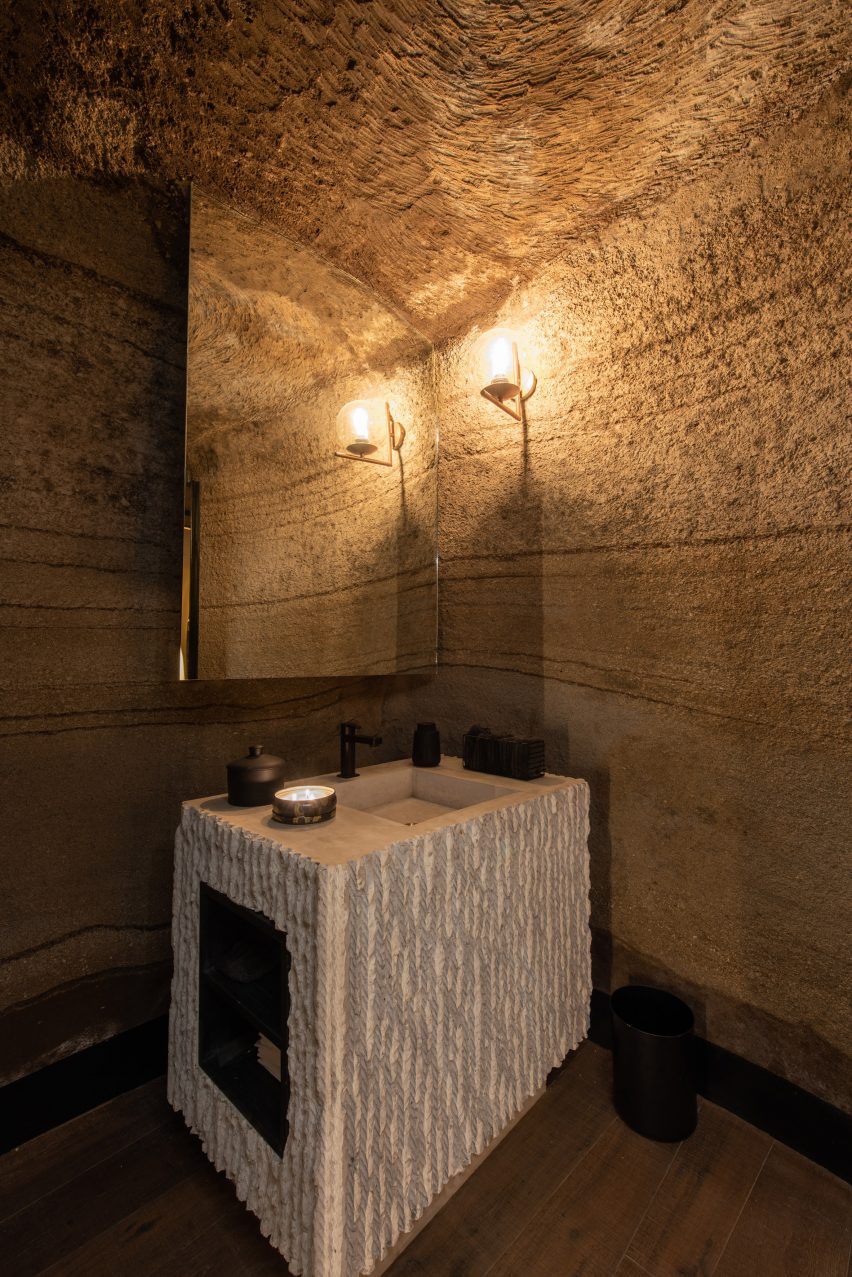
The architects worked with another artist – Rodolfo Díaz Cervantes of Taller Tornel – to create the washbasin in the bathroom. Constructed onsite using marbled concrete, the piece has a textural surface that references geological layers.
Revealing the cave's evolution over time was one of the project's primary goals.
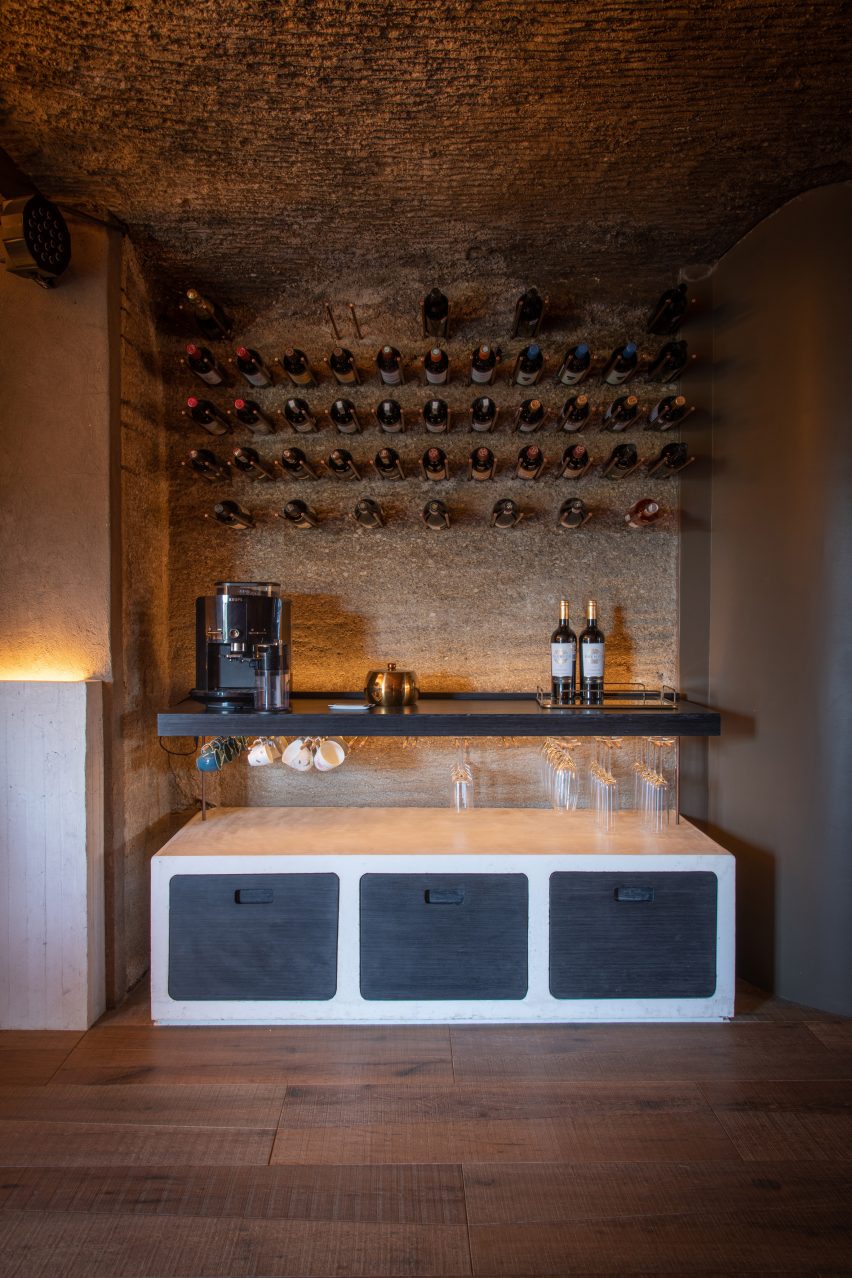
"Its beauty is in its nature and the reading of time observed in the strata of its walls," the architects said. "It is a space that awakens the intuition and the most primitive desires of men."
Other subterranean spaces include a Manhattan espresso bar by Only If Architecture that features metallic paint and black rubber, and a cave-like art gallery by Open Architecture that is carved into a sand dune in Qinhuangdao, China.
Photograph is by Jaime Navarro.
Project credits:
Architect: Amezcua
Design team: Gabriela Mosqueda, Aarón Rivera, Rodrigo Lugo, Miguel González, Saraí Cházaro, Víctor Cruz, María García, Mauricio Miranda, Julio Amezcua
Developer: MM Desarrollos
Solid surface interior lining: Krion K-Life by Porcelanosa
Thermoformed Krion-Life and installation coordination: Embodied by Gabriela Diaz
Interior lighting: Luz en Arquitectura
Outdoor lighting project and luminaires: Light Moxion
Pedestal and concrete sink in bathroom: Taller Tornel
Concrete furniture: JM Construcciones
Listone Giordano floor (supply and installation) and Mafi table: Forte/Solesdi
Entertainment system: Stylus Audio & Video